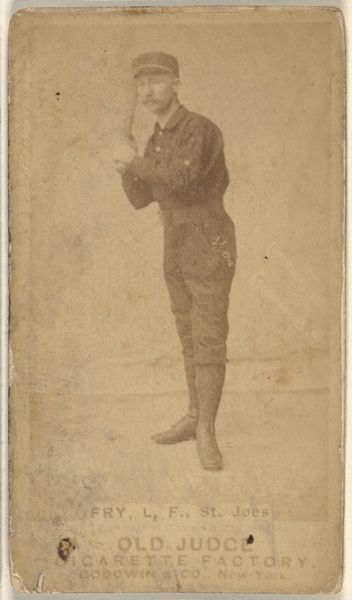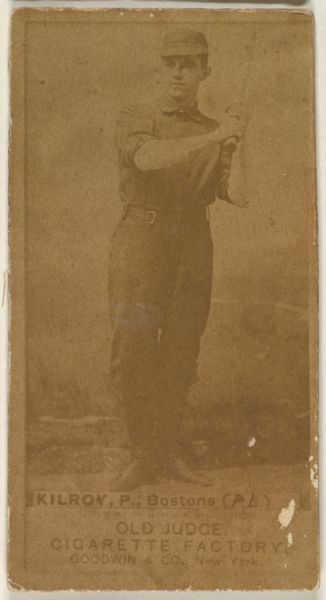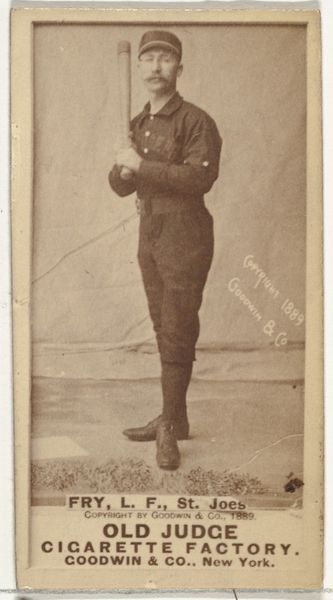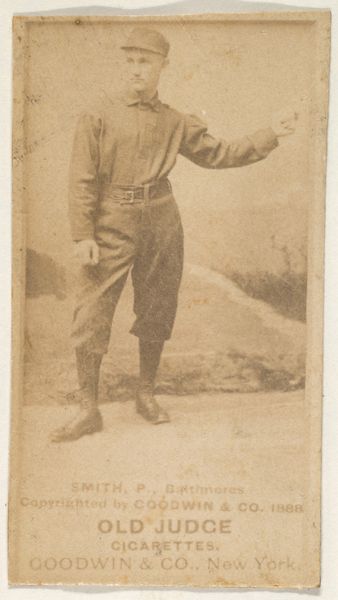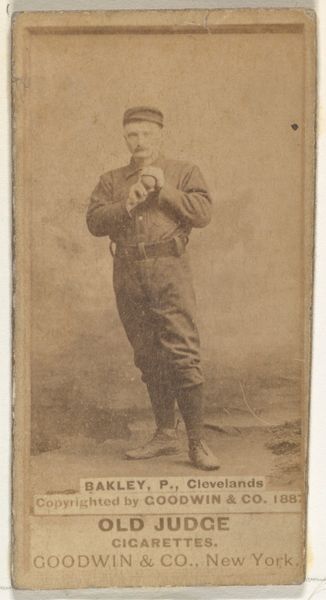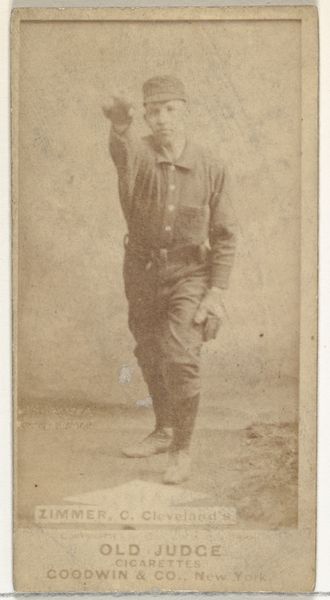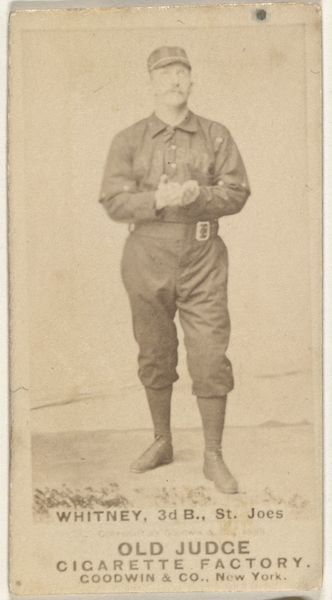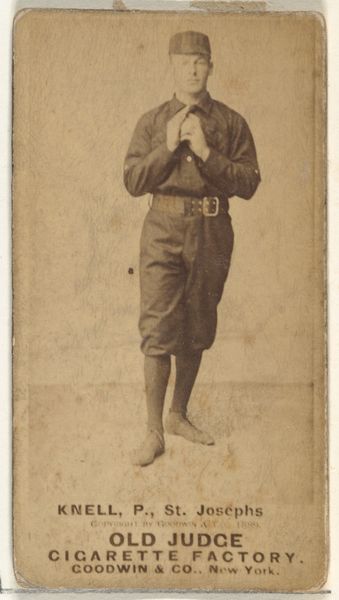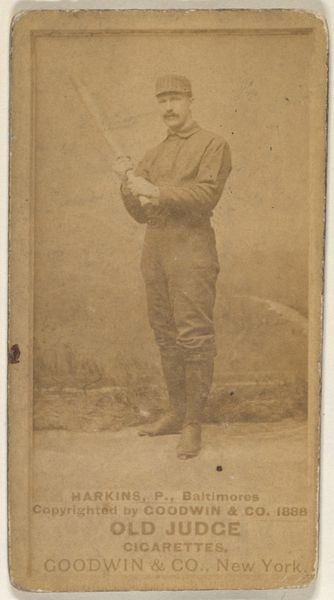
Charles F. Whitney, 3rd Base, St. Joseph Clay Eaters, from the Old Judge series (N172) for Old Judge Cigarettes 1889
0:00
0:00
drawing, print, photography
#
portrait
#
pencil drawn
#
drawing
# print
#
baseball
#
photography
#
pencil drawing
#
men
#
genre-painting
#
athlete
#
realism
Dimensions: sheet: 2 11/16 x 1 3/8 in. (6.9 x 3.5 cm)
Copyright: Public Domain
Editor: This is a baseball card from 1889, "Charles F. Whitney, 3rd Base, St. Joseph Clay Eaters," part of the Old Judge series. It's a photographic print. There's something stark about this image – very different from the glossy sports cards we know today. How should we interpret this piece, situated as it is within the late 19th century? Curator: These cards weren't simply celebrating athleticism; they were primarily advertising vehicles for tobacco companies. What does it say about society when baseball, seemingly a pure and wholesome pastime, becomes a tool for pushing addictive substances? How does this portrait, likely staged and idealized, reinforce certain ideals of masculinity tied to athletic prowess and consumerism? Consider, too, who had access to baseball, both as players and as consumers of these products, and the racial and class implications of that access. Editor: So, it’s about the connection between baseball, advertising, and societal values at the time. Curator: Exactly. The image promotes both a specific player and, subtly, the larger, potentially problematic, culture around spectator sports and commercialism. How are bodies commodified, packaged, and sold, both literally in the image and metaphorically in the context of advertising? Think about the absence of women and people of color from this image; whose stories are being left out? Editor: That's a strong point; I hadn't considered the exclusions so directly. Curator: Art, even in the form of a baseball card, rarely exists in a vacuum. By examining its historical and social context, we uncover broader cultural narratives about power, identity, and consumer culture that continue to resonate today. Editor: I’m beginning to see so many layers in this simple baseball card. Thank you! Curator: Indeed. The layers and tensions inherent in art, at any level, are so rich!
Comments
No comments
Be the first to comment and join the conversation on the ultimate creative platform.
